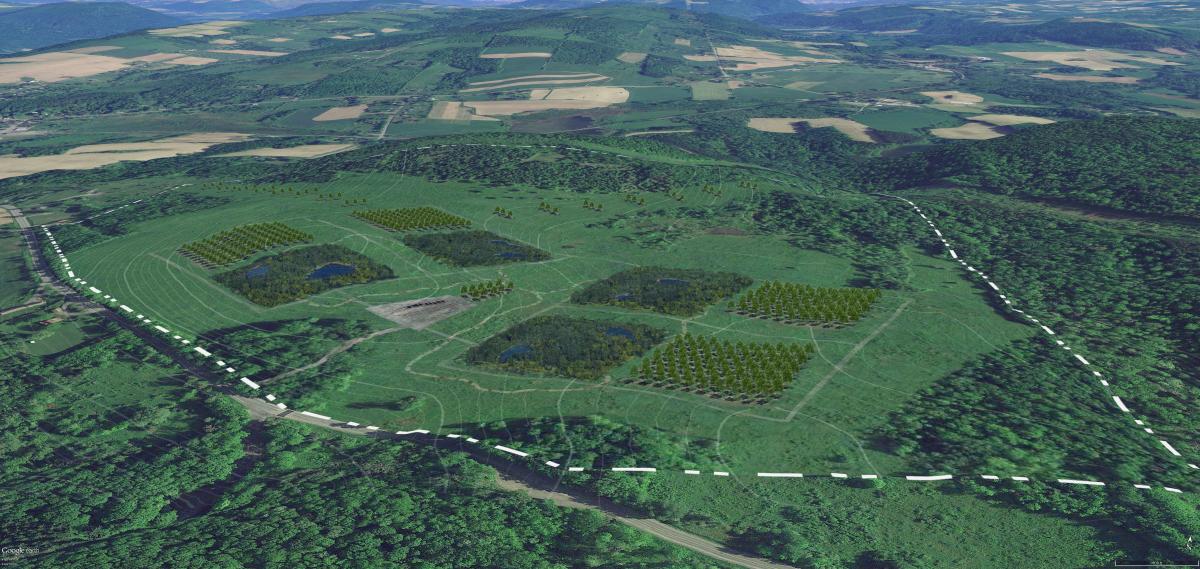Researchers are seeking broad public engagement as they guide the first genetically engineered forest tree a blight-resistant American chestnut through the federal regulatory process.
They re currently in the midst of their second crowd-funding campaign, this time raising money to create a 120-acre restoration forest near Tully, New York, that will offer research, education, and public recreation opportunities.

Scientists will use the site to study different approaches to forest restoration and blight-resistant tree production, as well as assess the environmental impacts, if any, of the transgenic chestnut trees.
We re calling it a century study, because theoretically, the trees could be out there for 100 years, said William A. Powell, director of the American Chestnut Research & Restoration Project at the State University of New York (SUNY) College of Environmental Science & Forestry (ESF).
Researchers will plant four types of chestnut trees: the transgenic, blight-resistant variety; trees bred through conventional backcross methods; hybrids that cross the American chestnut with an Asian variety; and the wild chestnut, which has been devastated by a pathogen inadvertently introduced from Asia more than a century ago.
Blight has killed some 3 to 5 billion American chestnut trees, driving the keystone Eastern forest tree nearly to extinction. The fungal pathogen functions by colonizing a wound in the bark and producing oxalic acid, which creates a canker that girdles the trunk, killing the trees within 10 years.
Powell and his co-researcher, Charles Maynard, identified a gene from bread wheat that detoxifies the oxalic acid, providing an effective defense against chestnut blight. A team of 100 university scientists and students at ESF assisted the work.
Over the coming decades, researchers will compare the vigor, blight-resistant qualities, and overall health of the various types of trees, as well as different planting methods: orchard, reclamation, and shelter wood cut. One area will be left unplanted as a control. They will also be investigating the distance that chestnut pollen can travel, and conducting bumble bee feeding, leaf litter, and other studies.
It s a very big project, Powell said. I ve been thinking about this for over a year now. It s very complicated.
He hopes the restoration forest will attract other research projects. We do a lot of collaboration, he said, noting that ESF landscape architecture students are designing trails and interpretive elements for school field trips and recreational hikers.
We want people to go out and see the trees and touch the trees and see that the transgenic trees are just like other trees, Powell said.
The American Chestnut Project has integrated public engagement and outreach into its research work from the onset.
Its first crowd-funding effort raised money to produce 10,000 transgenic chestnut seedlings, which will be distributed to the public once the regulatory process is complete and the federal government issues its approval. The ultimate goal is to get the transgenic trees into backyards and forests, where they will eventually confer genetic resistance to blight in the remaining wild populations and help restore the tree to its historic range.
Though the restoration forest isn t required for the deregulation process, it fits into what Powell calls a stewardship plan for assessing all the potential benefits and risks of using a transgenic tree species in ecosystem restoration.
Everything [transgenic] produced in the past has been for agriculture, Powell explained. This is the first time we re doing something for restoration.
Previously, regulators have focused on how to keep genetically modified organisms from spreading into the natural environment.
But we want this transgenic tree to get out there in the forest because that s what s going to save the American chestnut tree, Powell said. It s a whole new paradigm for the regulators to think about.
Powell and his collaborators are proceeding carefully and thoughtfully, well aware that they re blazing trail in both the scientific and regulatory arenas. These studies will help others who want to do this in the future, he said.
For more information, or to contribute, click here.
